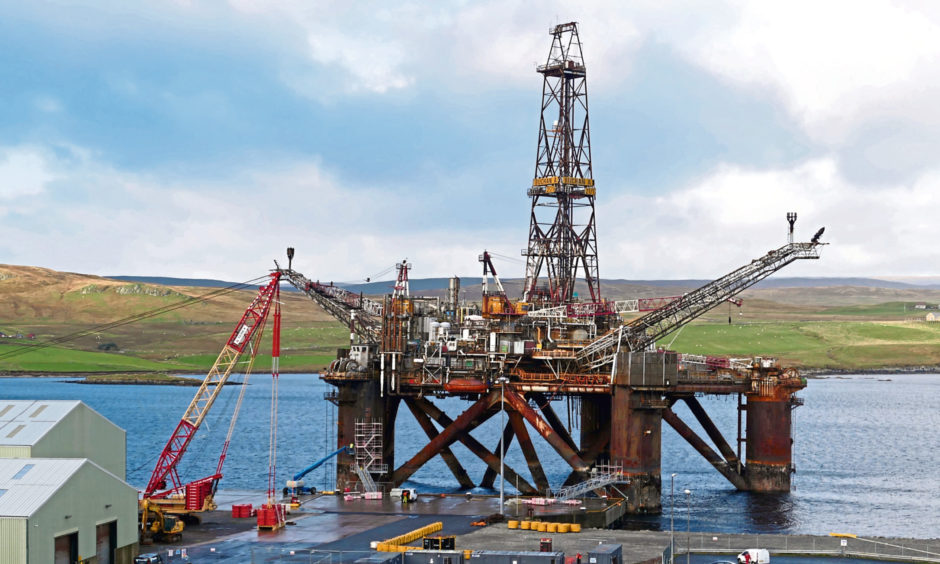As the energy sector rebounds from the challenges of the past two years, mergers and acquisitions activity is also tipped to bounce back.
A healthy pipeline of transactions is anticipated in 2022.
Following suppressed levels of offshore activity, uncertainty around new exploration – a result of the “Cambo effect” – as well as dramatic volatility in commodity prices, we’re now seeing much greater optimism which is, in turn, unlocking activity that’s getting deferred projects and maintenance programmes back on track.
As a result, there has been a huge operational recovery.
Order books in the supply chain are returning to or even exceeding where they were at the end of 2019.
The return to pre-pandemic revenues and profits is fuelling deals.”
The high levels of traditional oil and gas activity are converging with the rapid increase in energy transition projects to make the first quarter of 2022 one of the busiest for many firms.
This may also be happening as a consequence of the squeeze in resource caused by a decrease in personnel during the pandemic.
On the upside, this results in companies being forced to become leaner and more efficient and, ultimately, more attractive to investors.
The return to pre-pandemic revenues and profits is fuelling deals.
But so too is the road to net-zero, where companies are looking to accelerate their energy transition and bolster their ESG – (environment, social and governance) credentials through acquisition.
Two recent examples
Johnston Carmichael recently supported the acquisition of Optimus by PD&MS Group.
With more than two decades of front-end engineering across oil and gas and renewables, Optimus was a great fit for PD&MS – which has a clear strategy to support decarbonising oil and gas infrastructure, and further extend its services across multiple energy and industrial sectors.
Another example is the recent acquisition of Manor Renewable Energy by OEG.
The sector’s market leader in rental services snapped up this temporary power, engineering and vessel supplier as the latest deal in its strategy to grow its offshore wind and renewables offering.
Aberdeen’s @OEG_Offshore ‘massively broadens’ renewables offering with Manor acquisitionhttps://t.co/O8ZztAOlSE
— energyvoicenews (@EnergyVoiceNews) January 25, 2022
This growing trend of traditional offshore energy companies seeking to fill the gaps in their knowledge, skills, expertise and experience in greener energy sectors is sure to intensify.
It is, perhaps, in the subsea space where many deal opportunities will arise, not only in terms of mergers and acquisitions but also in terms of attracting investment.
Not only is the Scottish subsea industry a global market leader, but it also boasts expertise that is eminently transferable into offshore fixed and floating wind, not to mention non-energy markets such as defence and aquaculture.
North Sea vision
Looking forward, the OGA (oil and Gas Authority) and OEUK (Offshore Energies UK) have mapped out their vision for the North Sea, with a combination of oil and gas, wind, wave and tidal all featuring.
There are many projects operating an integrated infrastructure.
Electrification will feature prominently in future oil and gas developments as this will be how the staircase to net-zero emissions is achieved.
Whether it’s the exponential growth in offshore renewables or the shift to low carbon oil and gas production, the one common component is underwater cables.
Many synergies exist between subsea cables in the offshore oil and gas industry and the renewable sectors.
Skills and expertise in underwater umbilicals can be applied to cabling for offshore wind.
The scale of opportunity for subsea companies is massive.”
The latest figures from Scottish Renewables show Scotland’s offshore wind supply chain is currently worth nearly £1 billion a year and due to almost treble in size over the next decade.
It’s hardly surprising, therefore, that we’re seeing an increase in the number of subsea companies actively broadening their market focus.
While the market conditions are strong and the scale of opportunity for subsea companies is massive, they must still make sure they are well-positioned to attract investment.
Access to capital for innovation across the energy sector continues to be challenging.
‘Subdued’ appetite for oil and gas services
In particular, investor appetite in the oil and gas supply chain remains subdued.
The enabler, as always, is where businesses have credible solutions that improve recovery or production operations.
Increasingly, the decommissioning phase has been seen as a value and growth opportunity – where technology can be transformative to conventional operations and also allow operators to meet ESG goals, in particular environmental drivers such as emissions.
Demonstrating strong financial performance and long-standing, robust client relationships still matter.
Having a technology or a unique market capability – even if it’s still in development – is a major draw for growth-minded companies looking to demonstrate value to their investors.
And having a clear and compelling story about the company, its role in the energy transition and how it is delivering is absolutely essential to building profile among investors.
Demonstrating strong financial performance and long-standing, robust client relationships still matter.”
That narrative must be backed up by a robust business case so it is not seen as simply greenwashing.
In conclusion, all the indicators are aligning towards a return to a much healthier and more diverse supply chain which will make transactional outcomes more deliverable this year.
This, in turn, will support an escalation in valuations.
While it’s unlikely we will see the highly competitive buying and selling processes which drive up valuation multiples, and most transactions will remain at the conservative levels we have become used to, there will certainly be good deals to be done.
Alan Dick is director of energy and industry at Johnston Carmichael.

